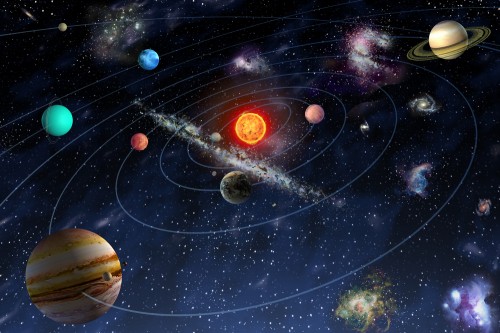Throughout history, many calculations have shown that stars in the solar system are affected by the gravitational force of another star that has yet to be discovered, thus Neptune, the asteroid belt and Pluto were discovered. New calculations indicate the existence of a giant yet-to-be-discovered body in the Oort cloud that has a significant impact on the movement of comets in the solar system. The search is in progress!!

Uranus was discovered in 1781 and at the time it was the seventh planet in number. In the following decades, feverish work was carried out to calculate the approximate orbit of the new planet. But the task turned out to be quite complex, since the actual observations deviated from the assumed path time after time, and the astronomers of the time did not know how to explain the reason for the deviations.
It took 6 decades until mathematicians analyzed the deviations from the predicted orbit and came to the conclusion that there is another body, which has not yet been discovered, that has a gravitational influence on Uranus. The rest is history, mathematical analysis allowed scientists to calculate the location of the mysterious planet, all that remained to be done was to look for the object with focused observations. Indeed, in 1846, the eighth planet - Neptune - was discovered.
"The Missing Planet"
Even earlier, in 1772, the hypothesis arose that between Mars and Jupiter there is a "missing planet". Focused observations revealed in the years 1807-1851 that the region was not empty, but it was not one planet but a series of asteroids. In this case too, a mathematical calculation of gravitational deviations led to the discovery of new celestial bodies.
"Planet X" (Pluto)
The discovery of Neptune in 1846 showed that there is another body that has a gravitational influence on it. The object was nicknamed "Planet X" and it took 9 decades to find it. But in the end, in 1930, it was discovered that the ninth ruler was Pluto. After the discovery it became clear that Pluto was too small to have a gravitational influence on Uranus and that the deviations were due to another factor.
A supposed planet in the Oort-Ticha cloud
A comprehensive analysis of long-range comets, which have arrived since 1898 from the Oort cloud to the inner solar system, revealed that the comets arrived at a higher angle than predicted by the galactic tidal theory. Again, the observations do not match the predicted model. And this time too, the existence of a planet can explain the phenomenon. A hypothesis about the planet was published in 1999, it should be larger than all the known planets, its diameter is 4 times larger than Jupiter, its mass is 1.4 times the mass of Jupiter, and it is 15,000 astronomical units from the Sun.
The putative planet has been given the temporary name Tyche, and NASA's WIZE space telescope is scanning the sky to find the elusive body. The AllWISE second sky survey analysis is expected to be published towards the end of 2013.

9 תגובות
Wow! If Tychus is 4 times larger than Jupiter then that means we have a body the size of a third of our Sun traveling in the Kuiper Belt!
If Pluto is too small for a gravitational effect, what did it do? And I assume that the reference is to the effect on Neptune and Uranus was written by mistake
What a bad name for a planet, hope it's a temporary name.
Maybe Tyche is a Vulcan that shatters (okay, this is a wild exaggeration) classical mechanics, which comes back to us to break (or improve) another theory.
Maybe Ticha is made of dark matter?
Pluto was accidentally discovered. He happened to be in the right place at the right time, but due to a miscalculation he was not the big planet they thought he was.
So what ultimately affects Uranus? And how did they discover Pluto, if it doesn't have a gravitational influence, by chance?
Waiting for Tyche!